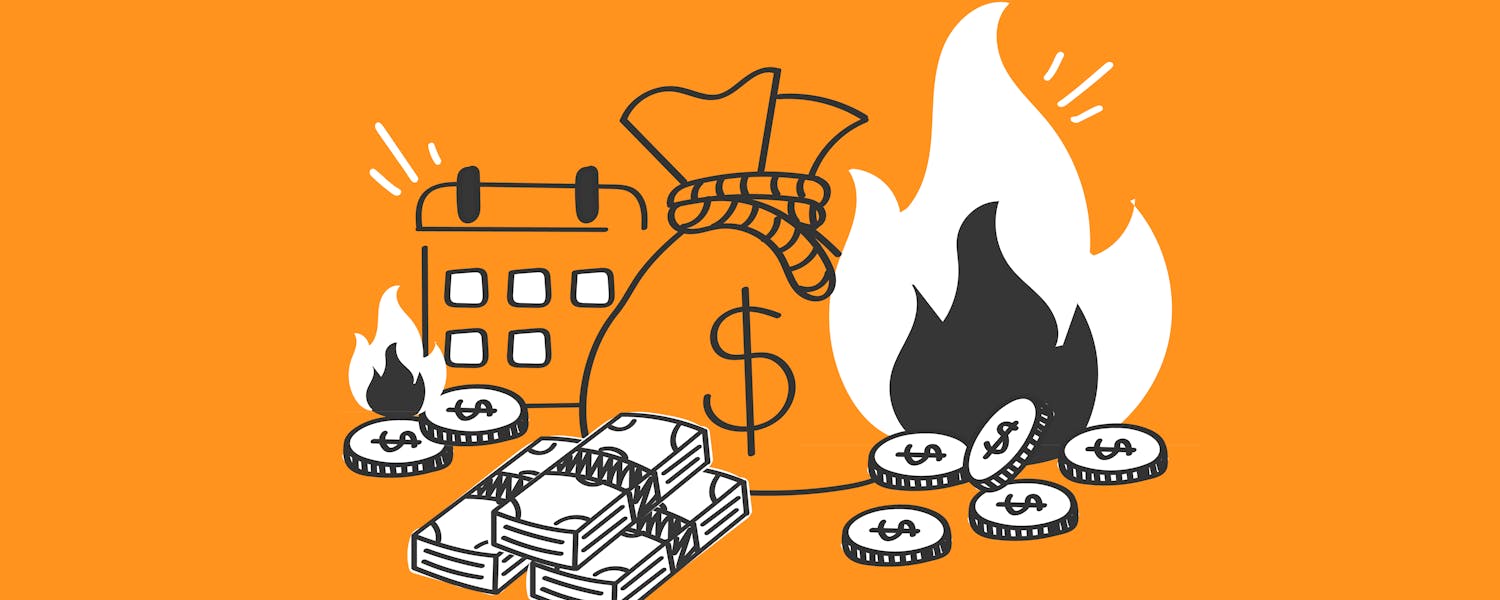FIRE to Start Your Golden Years at a Young Age
If you dream of an early retirement and you’re only in your 20s or 30s, it could be more achievable than you think!
Early retirement budget strategies can help you achieve your goals.
The key is understanding what you need, what you must sacrifice today to achieve it, and how long you can last in retirement with the savings you’ve accumulated.
The earlier you save for retirement, the more money you'll have, thanks to compound interest or letting your earnings earn money.
So whether you’re in your 20s or 30s, it’s never too early to think about retirement.
What is FIRE?
FIRE stands for Financially Independent, Retire Early. Notice it doesn’t stand for ‘being rich, retiring early,’ so don’t get the movement confused with wealth.
Instead, a FIRE budget focuses on what you need to have enough. In other words, it shows how much money you need to live comfortably without relying on your full-time job.
Envato/JulisarmiJSX80
When a person achieves FIRE, they can live the life they want, whether that includes work or not, and know their necessities are covered.
The FIRE movement focuses on simple living or having enough to live comfortably without spending money on unnecessary items.
Some forms of FIRE are more extreme than others, so it's always important to determine what you can handle and still enjoy life, which is the point of FIRE.
Who Started “The FIRE”?
The FIRE movement began in 1992 by two authors, Vicki Robin, and Joe Dominguez. They coined the term in a book they wrote titled, 'Your Money or Your Life.'
The book helped readers put into perspective what they were trading their money for and how it related to their values in life.
It helped readers understand that there is more to life than material things, and it was time to prioritize what is important.
Envato/choreograph
How Does FIRE Work?
Ideally, to achieve FIRE, you must decrease your expenses, increase your income, and invest aggressively to build wealth.
The goal is to build passive investments that continue growing and provide the necessary income to live throughout retirement without working, no matter how early you retire in life.
How Much Money do you Need to Retire?
You’re probably asking yourself, how much money do you need to retire, especially if you retire early?
There are two rules to consider living by to achieve your goals.
Rule of 25
The Rule of 25 shows you how much you’d need to have saved if you’re retired for 30 years of retirement.
If you plan an even earlier retirement, this method may not work.
But to use the Rule of 25, you must determine how much money you need to live annually, and multiply it by 25.
Envato/Artem_ka
For example:
|
If you need $100,000 a year to live ⬇ And receive $40,000 from Social Security and an established pension, ⬇ You still need $60,000 each year. ⬇ Multiplying $60,000 x 25, ⬇ You get $1,500,000, which is what you'd need to save to retire early ⬇ And withdraw 4% of your earnings per year |
4% Rule
The 4% rule offers a similar strategy, helping you determine how much money to save for retirement.
Envato/tehcheesiong
Using the 4% rule, you would withdraw 4% of your savings in the first year of retirement.
Each subsequent year you would withdraw 4% as well but account for inflation.
For example:
|
If you have $1.5 million saved ⬇ You could withdraw $60,000 in the first year. ⬇ If inflation was 2% the following year, ⬇ You’d withdraw $60,000 plus $1,200 (2%), ⬇ So $61,200 to ensure you have enough to cover the higher cost of living. |
Ways to Reach FIRE
So now that we've discussed what FIRE is and how much you need to be saved, you might wonder how you'd reach such a lofty goal.
Most financial experts recommend living by the 50/30/20 budget, which allocates 50% of your income to needs, 30% to wants, and 20% to savings.
Envato/SUPITNAN
However, most experts recommend a much leaner way of life to achieve FIRE.
First, to achieve FIRE, you must eliminate debt.
Any high-interest consumer debt you carry should be a priority to pay off in full as fast as possible.
High-interest debt is the opportunity cost of any investment earnings.
Next, of course, you must maximize savings.
To do this, many financial experts suggest sacrificing or reducing needs as much as possible while ignoring wants.
In extreme examples, financial experts suggest limiting your needs costs to 30% of your income and allocating 70% to savings and aggressive investments.
However, that's an extreme example and can be detrimental since aggressive investments are high-risk and could cause you to lose everything.
Finally, to achieve FIRE, you must increase your income.
You could focus on the income at your 9 to 5 job, but there are many other ways too.
According to a 5-year study included in the book "Rich Habits" by Tom Corley, which involved 233 wealthy individuals, 65% of them had at least 3 sources of income, while 29% had at least 5.
So this may help as an incentive for you to strive to obtain as many income streams as possible.
Common ways to increase income
Envato/MargJohnsonVA
The key is to maximize your income, reduce your expenses, and eliminate debt while investing in a way that suits your risk tolerance and timeline.
FIRE Variations
The FIRE movement has various approaches to achieving financial independence and early retirement, while it can help you to determine your options, yous should be sure you can commit to a lifetime to achieve them:
- Lean FIRE: This an even more extreme approach that requires living with the barely minimum both before and during retirement.
- Barista FIRE: Followers of Barista FIRE prioritize saving extensively in their earlier years, allowing them to work fewer hours or transition to less demanding or part-time jobs when their retirement time comes. The objective is not necessarily to retire fully at an early age.
- Coast FIRE: Coast FIRE requires accumulating enough savings or investments to support retirement without additional contributions. Individuals practicing Coast FIRE often continue working, but solely to cover their current expenses, using their savings to gradually transition into retirement.
- Fat FIRE: If your retirement aspirations involve enjoying a more luxurious lifestyle, Fat FIRE might be the path for you. This approach involves maximizing earnings and savings to ensure a comfortable retirement without having to adopt a frugal lifestyle in your younger years to live widely once you’ve retired.
By understanding these various FIRE variations, you can choose the approach that aligns best with their goals and desired lifestyle.
Beware
Investing too aggressively may not help you reach your goals, especially if you don't have the risk tolerance to withstand it.
Envato/kenishirotie
It’s always best to discuss your options with a financial advisor, including how to get out of debt and the best ways to invest to reach your goals.
Final Thoughts
Before jumping in headfirst into the FIRE movement, do your research.
Decide what you're comfortable with living on and how much you want to sacrifice today to reach FIRE in the future.
Decreasing expenses is the key to achieving financial independence, as is finding the right aggressive investment that you can tolerate.
However, be careful not to jump in prematurely and sacrifice more than you're willing to today, only to get burned on investments that don’t perform.
Understand what you can and cannot handle before trying to achieve FIRE. Avoid getting burnt!





